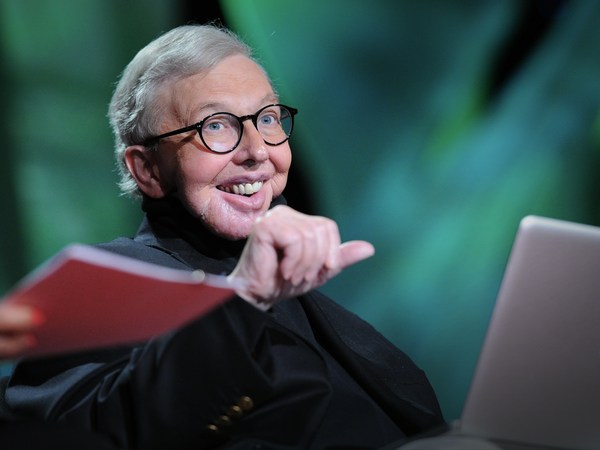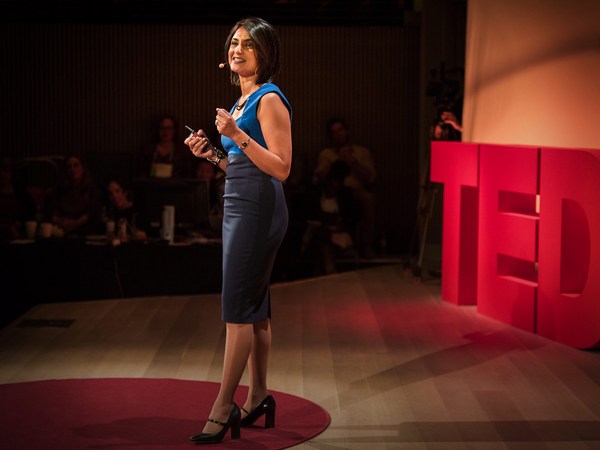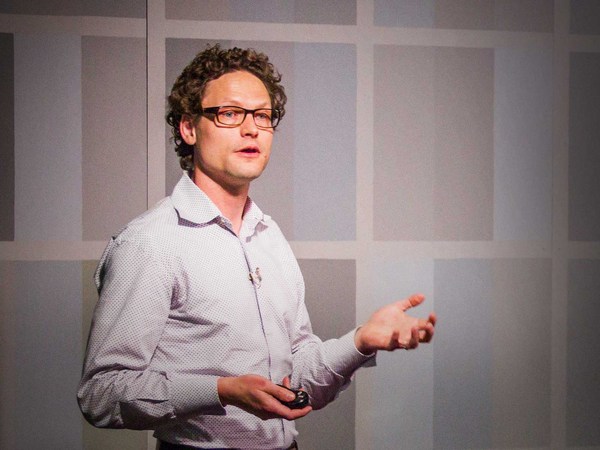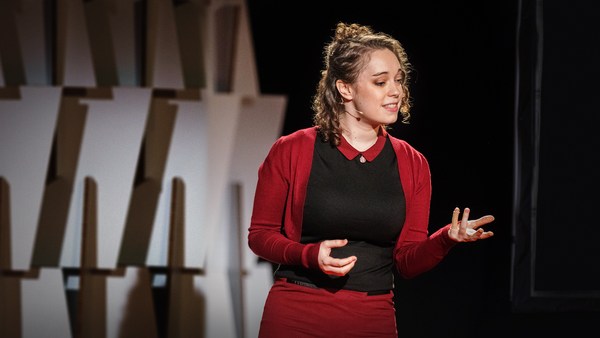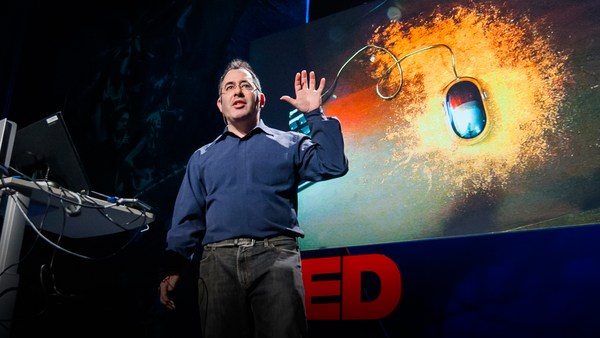There is a secret love affair that’s been going on your entire life, and you might not be aware of it. It’s a hidden romance between your hands and your voice. Glenn Gould is one of my absolute favorite pianists. What I’ve always loved about his recordings is that you can often faintly hear his voice singing the melody in the background, sometimes even multiple melodies at once. And it creates a feeling of his presence and echoes the voice in my own head following along. Gould himself said that the singing was unconscious and that to reach the level of performance he sought, he couldn’t help but sing along. And this anecdote is quite telling of the very mysterious relationship between hand and voice. Throughout my research, I came across many examples of this relationship and possible hypotheses of its origin. I’m a voice expert and a recent PhD graduate from the MIT Media Lab, and for the past 10 years, I’ve researched what makes a voice so rich and unique and I build technologies to help reach a higher level of understanding of the voice in a holistic manner. Among various previous projects, I’ve worked on wearables for singers to visualize their voice and change their vocal posture, apps based on the neurology of the inner voice to help people who stutter, devices that let you touch your voice and become aware of its physical vibrations, technological intervention in zoos to change to enter cross-species dialogue, and software that changes the way you hear your own chewing sound to affect your perception of taste. And based on my research, I’d like to share a story that illustrates the importance of looking at the voice holistically and the insight that might come from bridging different fields. So there are many different examples of this connection between hand and voice, starting with dexterity, the fine motor skill control often referring to manual activities. Each time you type on a keyboard or handwrite a letter or doodle on a piece of paper, you are precisely synchronizing the 60-plus muscles that you have in both hands combined. Fun fact - you actually don’t have any muscles in your fingers; finger joints are controlled by muscles in the palm and forearm. And now think of the 100-plus muscles that you need to synchronize each time you create a vocal sound. Most professional pianists and opera singers alike know that to push their musical craft to an art, they need intense practice, physical exercise, and muscle care. But even most of us are very good, even virtuosos, at the everyday use of our hands and voice. There’s really no other part of our body that we can control so precisely, But sometimes this control fails. In Parkinson’s disease, hands and other extremities are some of the first affected by the symptoms, and yet, patients report that their difficulties in controlling their voice and being heard is one of the most profound handicaps. This parallel of control between hand and voice goes deeper than the eye can see. In the brain, most of the motor commands that you do are controlled by the motor cortex, and in there, every part of your body is mapped in an orderly manner to the brain tissue, but instead of following a spatial mapping from head to toe, this mapping is a little bit all over the place, with more space allowed for more precise control. Not surprisingly, the control of hands and the one for facial muscles, voice, and lips occupy most of the space in there. But more interestingly, they are located right next to each other. Researchers have hypothesized that this anatomical proximity might be due to one important activity that involves both hand and mouth - eating. And indeed, to feed themselves, one of the most necessary behaviors for survival, early primates had to become master of hand-mouth synchronization. But this original proximity might also shed some light on some of our current use of hand and voice. We know that many ape species have fine motor command of their hands, but not of their voice. They can delicately shell peanuts, but seem to not be able to articulate sound with much precision. And one central theory is that language might have originated from hand gesture and was only later transmitted to the voice muscle. One way this might have happened is by some sort of contagion of movement, a sympathetic subconscious transmission of motion from hand muscle to voice muscle. And this theory was already being treated by Darwin in 1782 when he observed and I quote, “Children learning to write often twist about their tongue as their finger moves in a ridiculous fashion,” end quote. The theory of the gestural vocal proto-language is also supported by other structural aspects in the brain, one being, handedness. Most humans have a dominant hand, and in 90% of the cases, it’s the right hand. Also there’s still argument amongst researchers; it seems that a lot of species also show handedness, or should I say, “pawdedness.” But in most research on cats, dogs, and primates, we see that individuals are more equally divided between right dominance, hand dominance, and ambidextrous. So it seems that humans are one of the rare species to have such a drastic incidence of right dominance. And as a brain is contralateral, meaning that each half of your body is controlled by the opposite hemisphere in the brain, it means that most humans are left-cerebral dominant for hand control, and that’s another similarity with the voice, as not only most language areas in the brain of humans are generally located in the left hemisphere, but we also see that in a lot of species who have left-cerebral dominance for vocalization. And a theory here is that hand dominance might have come from the voice to the hand. So to summarize, language went from hand to voice and lateral dominance from voice to hand. Moving away from the brain, the human larynx or voice box also keeps all the cues of this co-evolution between upper limbs and the voice in the presence of what we call the vestibular folds. So those folds look like a little pair of curtains in front of your vocal cords, and you can think about it as the vocal cord of a fragile little door that can be damaged and can’t take too much pressure. But the vocal cords are a much stronger gate that allows us to maintain pressure of air inside or outside and maintain more core stability. And they exist in many other species. In the salamander, those vestibular folds are necessary to resist the water pressure that would otherwise drown them. In chimpanzees, they help with preemption and holding onto branches. And in humans, they’re very useful for weightlifters during breath pause, and also surprisingly, babies. When babies are born and until three months of age, they’re able to hold their entire body weight with one fist, and that’s thanks to those vestibular folds. When singers apply too much pressure to their vocal cord, they can make those folds’ vocal cord vibrate and that creates a deep, rich rumbling sound that we find in Tuvan throat singing and also the songs of Louis Armstrong. But for most of us, this hidden voice relationship is most often observed when people talk with their hands. Whether a learned habit to be a more efficient speaker or a cultural trait like in many Mediterranean languages, it’s been shown to enhance communication. And indeed, you can learn a whole series of tricks to be a more likeable speaker: palms up for request, clenched fist for firm commitment, but beware of hidden hand or hand on hip that makes you look less trustworthy or overconfident. (Laughter) In a different context, voice actors often guide themselves with hand gestures to guide their tone. So if you're looking for the right tone or prosody, you can guide yourself with your hands and let your voice follow your body. Be your own conductor. Hand gestures are also associated with better speaking in children by improving access to memories. And this is particularly true in young girls who acquire language earlier than boys. But also in adults, hand gestures are linked with a good mnemonic. So next time you can't find the word, try moving your hand. Maybe a hand puppet might help. (Laughter) I hope this tour of various hand-voice phenomena has shed some light on the many strings that tie your hand and your voice in such a tight relationship. What stands out to me is that although this union touches many aspects of communication - muscle motor command, memory, brain - it seems to transcend verbal content and language. The hands give us a sense of the richness of the voice beyond words. This bond also reflects on the importance of muscle action as a deep root of the voice and maybe also its internalization. If you ask a person deaf from birth what their inner voice feels like, they might describe something akin to a pair of hands moving in a void. This ethereal image reflects the immateriality of the voice as being able to exist in many shapes and forms. So what can we learn from this? Your voice is an action. It is how you touch people. It can be a punch or a caress. It can be a piece of art or a forgery. It can be a hug or a struggle. It can be a manipulation or an invitation. Thank you very much. (Applause) (Cheers)
